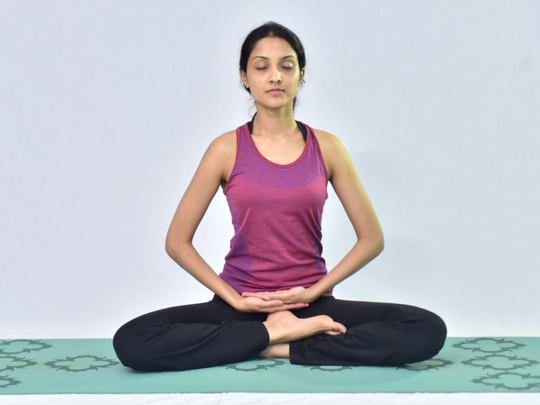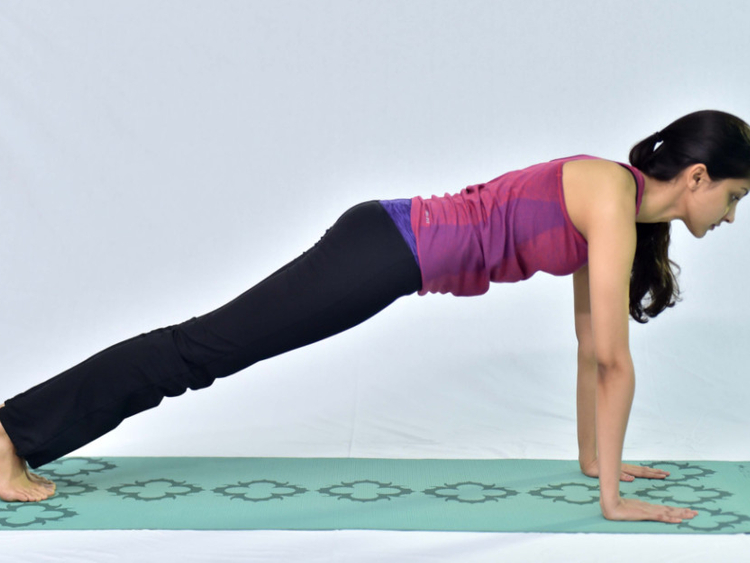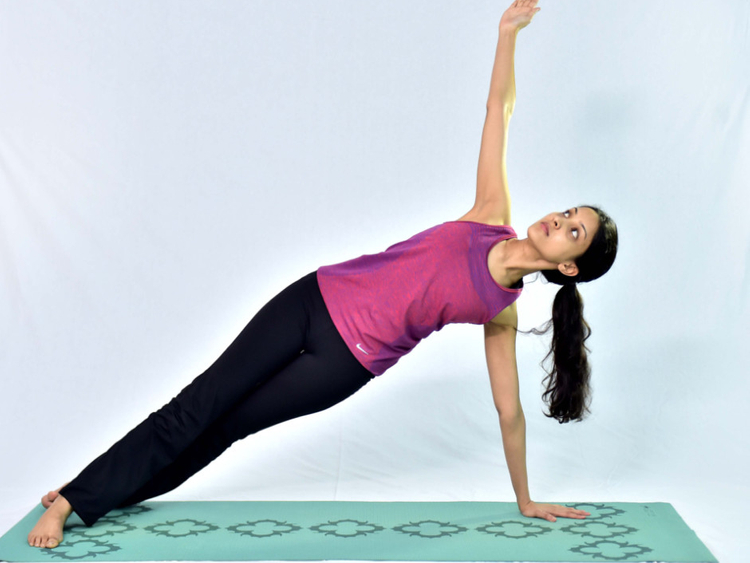
To understand mudras further, it is important to understand how they affect the prana (life force) in the human system. The science of yoga says the energy system is made up of chakras (energy vortices) and nadis (energy channels).
The word chakra literally means wheel or circle. The chakras are vortices of pranic energy at specific areas in the body which control the circulation of prana. Each chakra is a switch which turns on or opens up specific areas of the brain. In most people these centres lie dormant and inactive. Yogic practices stimulate and activate them. There are 114 chakras, two of which lie outside the body. There are seven significant chakras and are located along the centre of the spine.
The word nadi literally means ‘flow’ or ‘current.’ There are 72,000 nadis and should not be mistaken for nerves. They are not part of the physical body, although they correspond with the nerves. Nadis are the subtle channels through which the prana flows. Out of the 72,000 nadis, three are most significant. These are ida, pingala and sushumna.
Ida runs through the left side of the spine, pingala runs through the right side of the spine. Both form a criss-cross emanating from the base of the spine and terminating at the sixth chakra which lies between the eyebrows. During the twenty-four hour period of the day, one of the two dominates every 90 minutes. When ida and pingala nadis are purified and balanced, then sushumna begins to flow. Sushmna runs through the centre of the spine and aids in spiritual awakening. The nadis and chakras constantly radiate prana which normally escapes from the body and dissipates into the external world. By creating barriers within the body through the practice of mudra, the prana is redirected within.
Mudra of the week
Bhairava Mudra (fierce or terrifying attitude)
In the practice of this mudra, the two hands represent ida and pingala nadis, and the union of the individual with the supreme consciousness. It helps channelise the prana along the two major nadis and redirect it to sushmna. It restores a harmony between the right and left hemispheres of the brain. It enhances a sense of balance and aids in concentration and alertness. Thus it is an excellent mudra for meditative practices.
Sit in a comfortable meditative posture with the head and spine straight.
Place the right hand on top of the left, so that the palms of both hands are facing up.
Both hands then rest in the lap.
Close the eyes and relax the whole body, keeping it motionless.
Take the focus to the breath and observe the flow.
Practise for 10-20 minutes every day.
Variation: When the left hand is placed on top of the right the practice is called Bhairavi mudra.
The following postures also help a sense of balance in the body.
Santolanasana
Vashishtasana
Next week: Practice of mudras – part 3
— This is an interactive series, in which we bring you practical tips on daily living, inspired by the vision of yoga. Write in to tabloid@gulfnews.com with your questions and doubts regarding enhancing your lifestyle through yoga. For more information, call 800-YOGA (9642) or log on to artisticyoga.com














